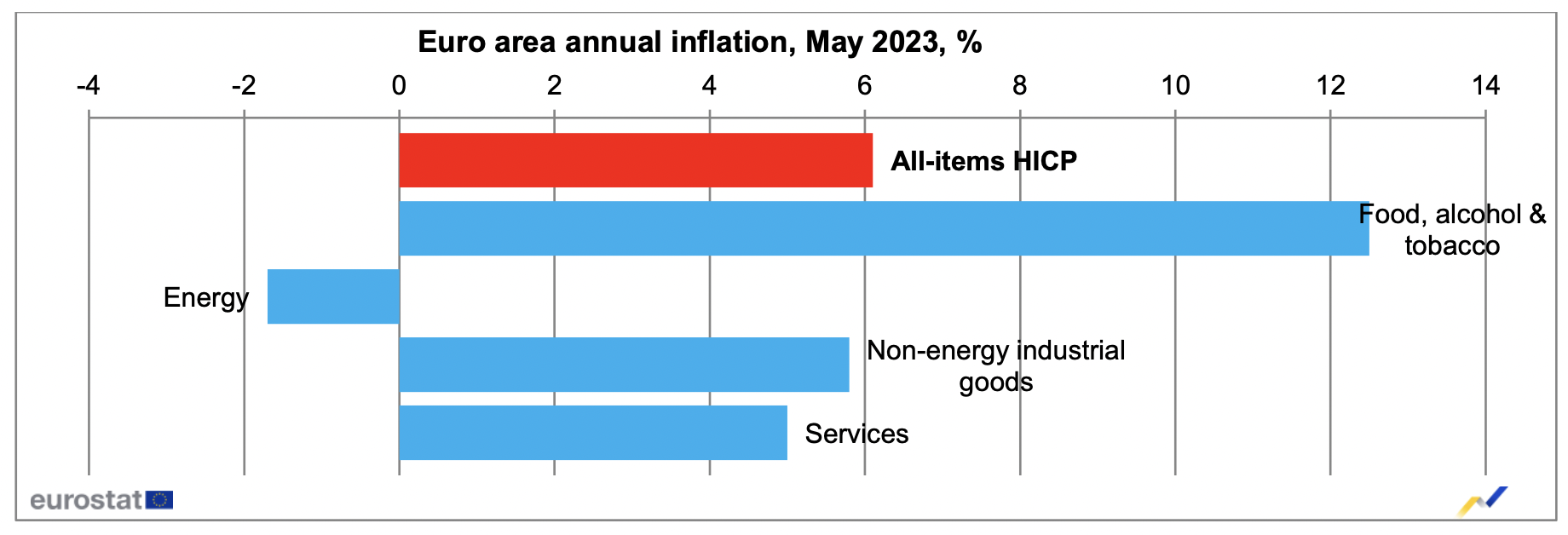CdM: Price rises ease in the euro area. In May, inflation fell nine tenths of a percentage point from the previous month, bringing the Consumer Price Index (CPI) to 6.1%, according to Eurostat, the EU’s statistical office. This is the lowest level since February 2022, coinciding with the Russian invasion of Ukraine.

Excluding the impact of energy, food, alcohol and tobacco, core inflation achieved two consecutive months of moderation, standing at 5.3% from 5.6% in April. Excluding only energy, the rate falls to 7%, compared with 7.4% in the previous month.
Looking at the main components of eurozone inflation, food, alcohol and tobacco are expected to record the highest annual rate in May (12.5%, down from 13.5% in April), followed by non-energy industrial goods (5.8%, up from 6.2% in April), services (5%, up from 5.2% in April) and energy (-1.7%, down from 2.4% in April).
By country, the highest inflation rates were recorded in Latvia and Slovakia (12.3% each), Estonia (11.2%) and Lithuania (10.7%), while the lowest price rises were recorded in Luxembourg (2%), Belgium (2.7%) and Spain (2.9%). Thus, the inflation differential between Spain and the eurozone remained at -3.2 points in May, making it nine months in negative territory.
Among the other major eurozone economies, inflation in Germany moderated in May to 6.3%, in France to 6% and in Italy to 8.1%.
“Headline inflation in the euro area moved further away from the boiling point in the middle of the second quarter and, more importantly, core inflation also declined,” comment analysts at Pantheon Macroeconomics. Looking ahead, they believe headline inflation will fall further, but core inflation will pick up.
“We continue to believe that these figures will help drive a change in ECB communication over the summer, paving the way for a final hike in July,” they add, estimating two more rate hikes of 25 basis points, in June and July. “The main upside risk to this assumption is a further rise in services inflation (the other main components are now weakening significantly), but despite base effects in the volatile component of transport prices in Germany, we believe underlying services inflation is now stabilising, ahead of a fall later in the year,” they say.





